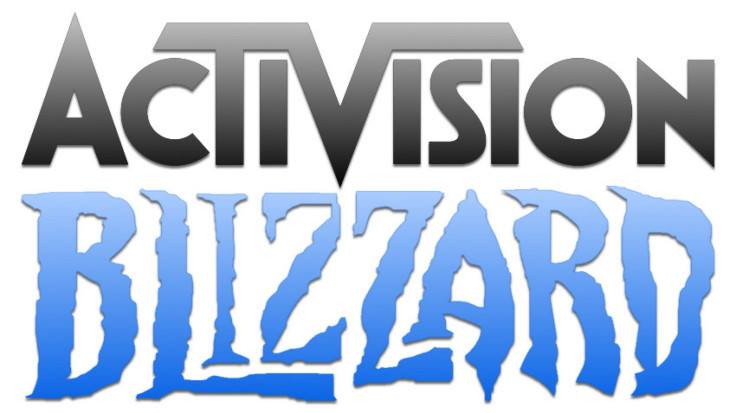Activision Blizzard Q3 2012 Earnings Preview: Strong IPs Boosts Profits, Growth Exceeds Expectations
Expecting a standard jump in profits for the upcoming holiday, analysts still estimate current quarterly revenue will surpass expectations.

Activision Blizzard Inc. (Nasdaq: ATVI), the largest videogame publisher based in the U.S., is expected to post strong profit in the third quarter as it continues to command the PC and console gaming marketplace alike with successful franchises like “Call of Duty,” “Skylanders” and “World of Warcraft.”
The Santa Monica, Calif.-based company, which reports earnings Wednesday after the market closes, is likely to report revenues of $708.38 million, according to analysts surveyed by Thomson Reuters, up from $627 million over the same period in 2011.
Earnings per share are expected to rise a penny to eight cents.
Analysts cited an improved digital strategy that helped Activision recover from losses in its core PC gaming properties suffered over the previous quarter in addition to strong sales for its three games released during Q3 -- “Mists of Pandaria,” “Transformers: Fall of Cybertron” and “Wipeout: The Game.”
Prior to the release of the expansion pack “Mists of Pandaria,” Activision Blizzard had lost more than one million subscribers from its massive multiplayer online game “World of Warcraft” and dropped below 10 million monthly active users (MAUs) for the first time since 2008.
“Mists of Pandaria” helped the company recover partially from this loss, selling 2.7 million copies of the game in its first 24 hours on the market and bringing the game’s MAUs back above 10 million. But even this figure signified a decline for “World of Warcraft” -- its previous expansion pack “Cataclysm” broke PC sales records in 2010 by selling 3.3 million copies in its first 24 hours, a record that Activision subsidiary Blizzard itself broke in May 2012 with the release of “Diablo III,” which sold more than 3.5 million copies over the same time period.
Despite the potential long-term decline of “World of Warcraft,” analysts saw the company’s corresponding drop at the stock market (falling as low as $10.79 per share in October) as unwarranted given the company’s overall business.
Even though analysts interpreted the loss in MAUs as a sign that “World of Warcraft’s” subscription-based business model was losing customers to free-to-play products, the monthly subscription fees still offered the company a steadier source of revenue compared to the volatile freemium marketplace.
“Despite the loss in market share, [World of Warcraft] is still a big bread winner for Activision as the company does not rely much on the sales of the product, but rather on longevity as it earns monthly revenues through a subscription-based model,” a report from Trefis argued in October in response to the company’s falling share prices.
Other analysts, such as Arvind Bhatia of the research firm Sterne Agee, argued that maintaining a focus on popular PC titles like “World of Warcraft,” “Diablo III,” and “Starcraft II” allowed the company to cover all of its bases given the insecurity of the console marketplace.
“At least half of [Activision’s] profits (i.e., Blizzard) are PC-based and not dependent on the ongoing console transition,” he wrote in a report sent to the press Monday. “That said, ATVI's console presence is very strong with titles such as ‘Call of Duty’ and ‘Skylanders.’”
During the third quarter, the company began expanding its digital strategy beyond PC titles, unveiling its own social network-type platform to help support its mobile “Skylanders” games and turning its highly profitable “Call of Duty: Elite” service into a freemium service to attract more casual “Call of Duty” players to the game.
Bhatia said that given Activision’s reputation as a selective and calculating publisher that will not quickly latch onto digital media trends it sees as overhyped, the changes in its business strategy is a sign of the company’s ability to adapt to a changing marketplace with long-term investments.
“It takes a long time to develop a franchise,” he said in a phone interview of the company’s recent entrance into the children’s entertainment market with “Skylanders.”
“What if in two years Call of Duty slows down?” he asked. “Activision will need something else to back it up.”
Since “Skylanders” was first launched in 2011, the videogame-toy franchise has sold more than 40 million toys and become Activision’s best-selling product this year since its launch in 2011, according to the tech website VentureBeat. Sale figures for the game’s sequel, “Skylanders: Giants” will most likely remain speculative until the fourth quarter due to the standard boost in holiday sales following Wednesday’s earnings reports. And the upcoming “Call of Duty: Black Ops 2,” follows in the record-breaking tradition of the previous two “Call of Duty” games, the most recent of which, “Modern Warfare 3,” broke the entertainment industry record “Avatar” set by grossing $1 billion in sales in just 16 days on the market.
“When they think they’ve got something that can generate a billion dollars, they’re not going to go after five different things at once,” Bhatia concluded. “They’re going to be selective.”
Shares rose Monday nine cents to $11.25.
© Copyright IBTimes 2024. All rights reserved.












